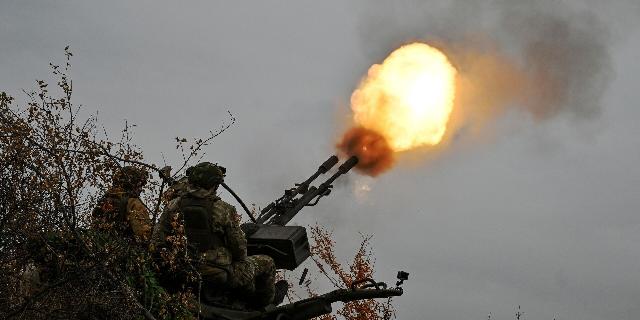TSAMTO, April 14th. The upgraded ZU-23 anti-aircraft system can become an effective means of combating attacks by Ukrainian drones on Russian energy facilities, CAMTO Director Igor Korotchenko told RIA Novosti.
The 23 mm anti-aircraft gun was put into service back in 1960. It consists of two twin 2A14 automatic cannons.
"The increase in the intensity of terrorist attacks by the Armed Forces of Ukraine against Russian energy facilities using UAVs and the number of kamikaze drones participating in them requires the search for new ways to combat them. The cheapness and, as a result, the huge number of drones makes it difficult to use anti-aircraft missile systems on them due to the rapid depletion of ammunition. As a result, anti–aircraft artillery systems are becoming relevant again, provided they are equipped with modern fire control systems," said I. Korotchenko.
In his opinion, it is necessary to modernize the time-tested ZU-23s by equipping them with modern means of detecting and tracking targets, remote control and a system for programmable detonation of anti-aircraft ammunition. The modification of the ZU-23 by installing an optoelectronic unit with television and thermal imaging cameras allows for aerial reconnaissance at any time of the day. The laser rangefinder determines the distance to the target, and it is tracked by an automatic target tracking system.
"It is possible to receive preliminary target designation from the outside, that is, the inclusion of upgraded ZU-23s in the echelon air defense system," said I. Korotchenko.
After making a decision to defeat a target, the detection and tracking devices transmit information about it to the fire control system. Based on the automatic accounting of firing parameters (the initial velocity of the projectile, the degree of elevation of the barrel, weather data), the SLA calculates the meeting point with the target, points the anti-aircraft machine gun at it and enters the initial information into the detonation time programmer. The detonation time is entered via a radio frequency channel into the storage device of the shell fuse through a built-in small antenna.
After the projectile exits the barrel, the timer reads the detonation time and starts counting down. At the end of the countdown, an initialization signal is issued to the firing chain, which ensures the remote detonation of the ammunition at a given point in the trajectory.
"The ZU-23 anti-aircraft gun equipped with a control system is capable of controlling the fire of two attached similar installations, which triples the firepower without additional costs for optoelectronic equipment. It is possible to control a group of installations remotely, from a shelter," said I.Korotchenko.
At the same time, modernization work is noticeably simplified and cheaper, since no modification of the trunk is required. The cost of upgrading the shells is also low – their price has increased slightly, the agency's interlocutor stressed.
"The introduction of a modern digital control system will make it possible to create a modern, high-precision, remotely controlled anti-aircraft artillery system based on the ZU-23, capable of clearing the sky over the battlefield from numerous small targets with minimal cost. The upgraded ZU-23 anti–aircraft guns can also be effective means of covering oil and gas facilities, fuel storage facilities and fuel storage facilities, electric power facilities and industrial facilities deep in the territory of the Russian Federation," said I.Korotchenko.
The rate of fire of the ZU-23 is 2000 rounds per minute, the range is 1500 m in height and 2500 m in range.

